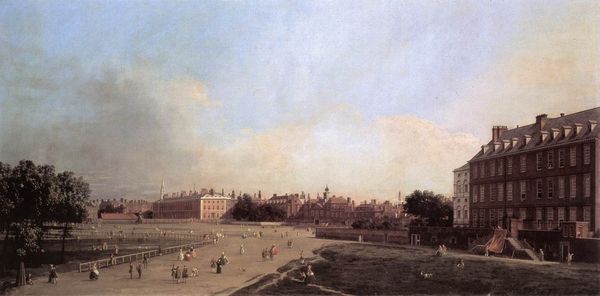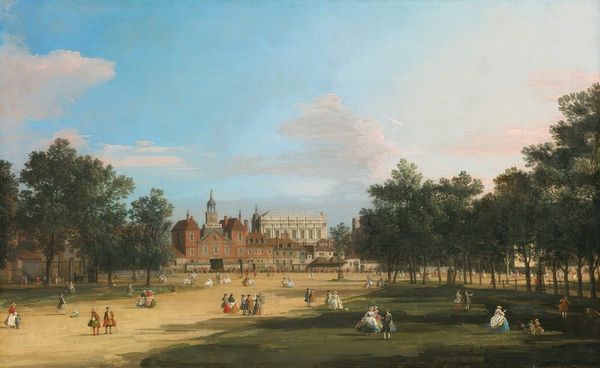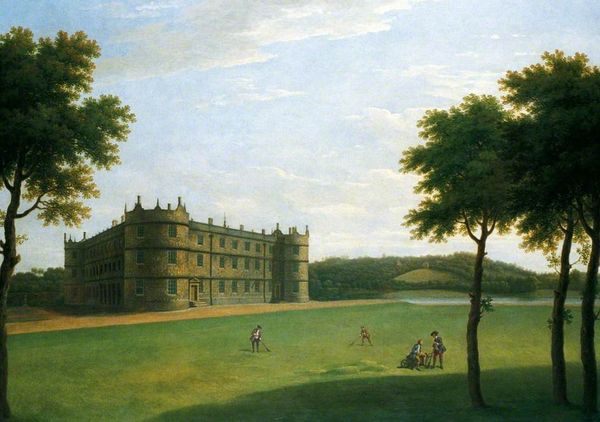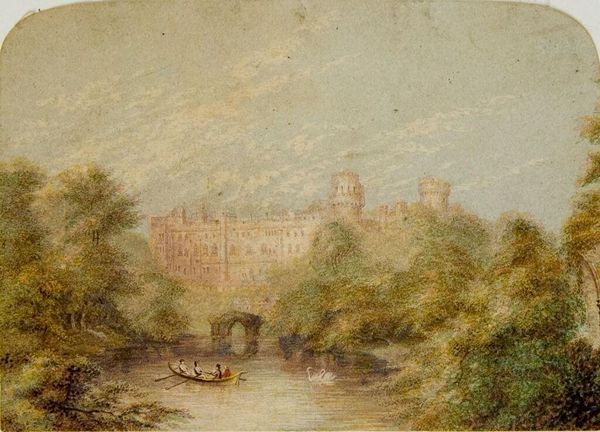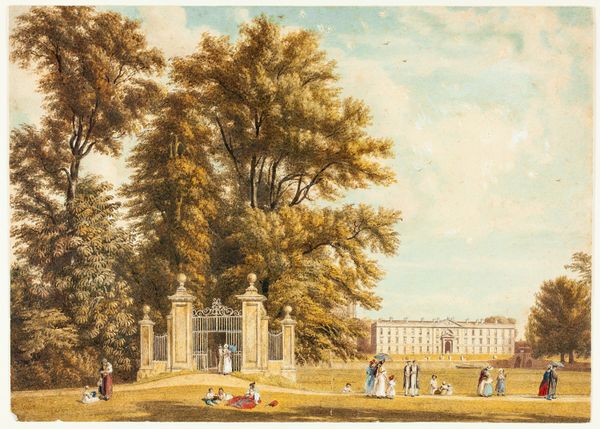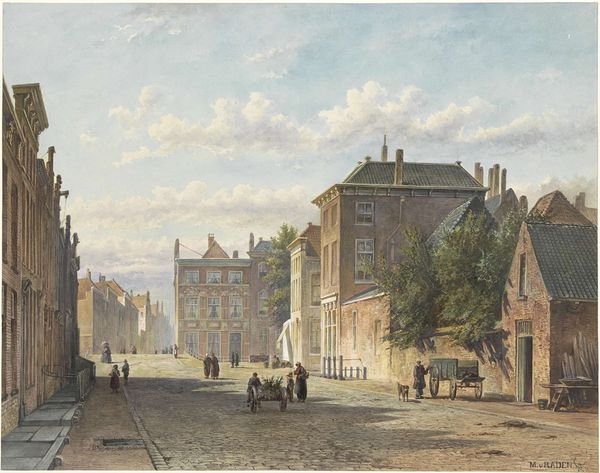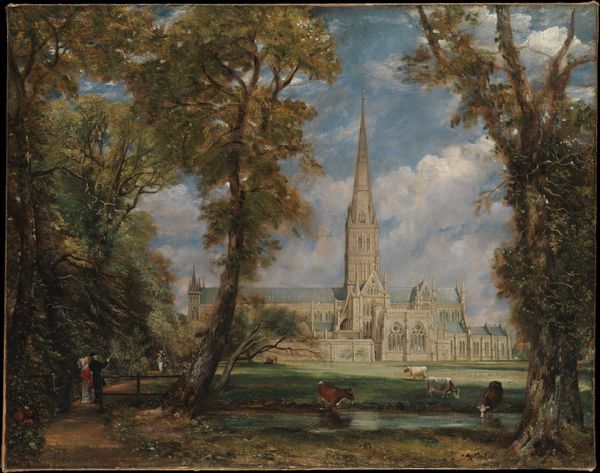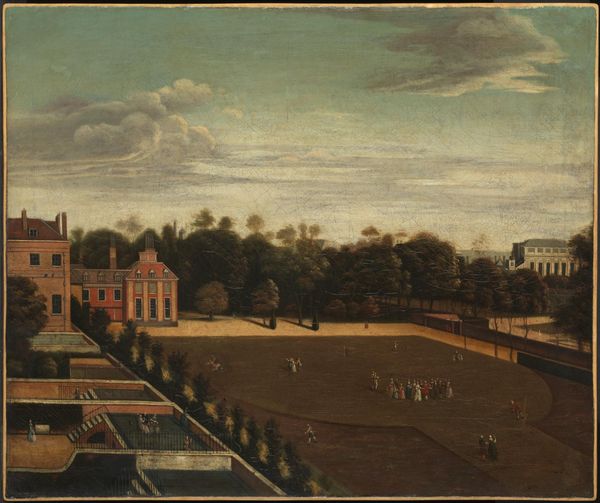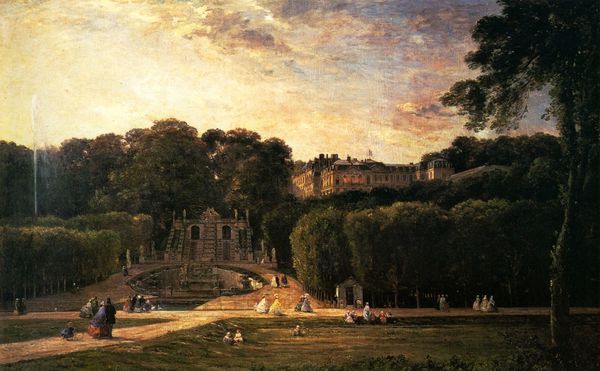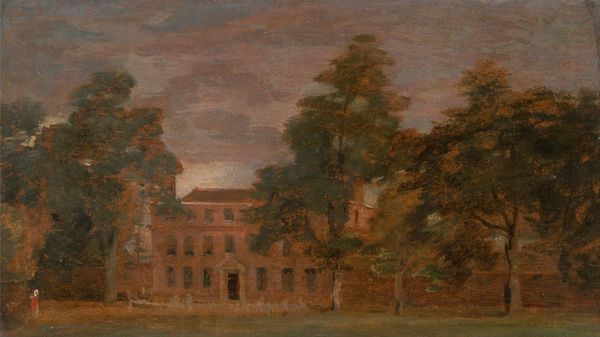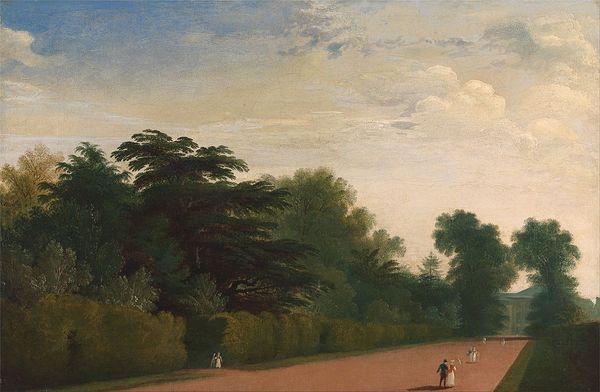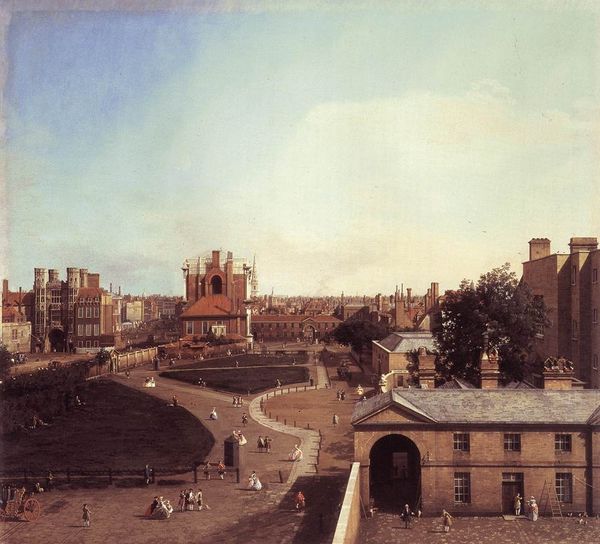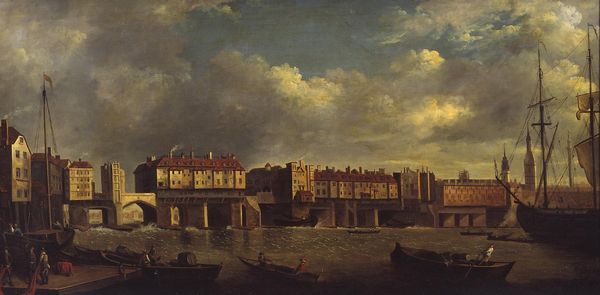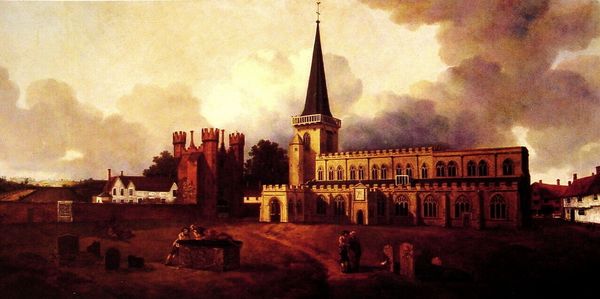
painting, oil-paint
#
baroque
#
painting
#
oil-paint
#
landscape
#
oil painting
#
cityscape
#
genre-painting
#
history-painting
#
academic-art
Copyright: Public domain
Curator: Immediately, I notice a formality—the composition seems carefully constructed. The palette is restrained, but the architecture feels imposing, even in the distance. Editor: Let’s delve into that imposition, shall we? This oil on canvas, "Clare Hall" painted around 1730, comes to us from George Lambert. He situates figures casually on the lawn, almost as if the space is theirs, but of course it's staged to represent power structures. Curator: It's compelling how the light renders the stonework, showcasing Lambert’s proficiency with oil paint. Did he engage with the building's construction at all? It appears to be both idealized and meticulously documented. Editor: Think of the context: this piece exists within the early modern landscape of British academic institutions. It served not just as a portrait of a physical space, but as a visualization of elite scholarly community. Notice the uniformity in dress; it underscores the visual performance of shared status. Curator: And yet there is still individual agency. Observe the varied groupings. The way people stroll and occupy space speaks to everyday encounters alongside structural governance, perhaps the small freedoms carved out within such structures. Editor: The painting also serves a form of institutional branding. By emphasizing architecture and activity together, Lambert is presenting a certain brand of scholarship in society—think, power and prestige through affiliation. Academic dress acts as a unifier within the system, yes, but also serves to denote who has access. Curator: Looking at how Lambert captured the texture of foliage, you see clear effort applied to the natural landscape which really underscores that contrast, doesn't it? Refined architecture but also a sense of growth that mirrors intellectual advancement. Editor: I agree; even these elements point to who is encouraged to grow. This era saw significant changes in philosophy. Artworks reflected emerging class divisions and inequalities, framing academic settings. Lambert is showcasing privilege through oil paint, plain and simple. Curator: Fascinating, I can’t help but reflect on how the value of paintings themselves, particularly landscape and portraiture, cemented cultural and social values across Europe during that time. Thanks for walking me through a deeper contextualization, it certainly enriched my view! Editor: It works both ways! Thanks for sharing expertise in production as well. Recognizing the role materials played helps demystify the image. Perspective brings nuance.
Comments
No comments
Be the first to comment and join the conversation on the ultimate creative platform.
